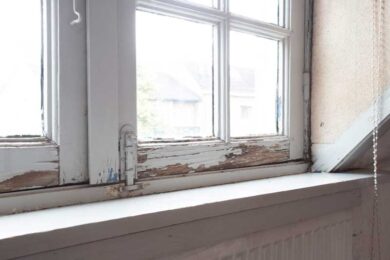Comprehensive Overview on Effective Lead Infraction Elimination Methods
In the realm of ecological safety, addressing lead violations demands a precise and structured approach. This thorough overview begins by highlighting the crucial initial actions of recognizing lead risks with advanced analysis and testing techniques. Techniques such as XRF analysis and dust clean sampling are important in identifying contamination sources. Moreover, the overview clarifies on the relevance of sticking to stringent safety procedures during the elimination procedure, consisting of the usage of correct PPE and isolating influenced areas (Lead Paint Removal Company). The subsequent sections promise to go over post-removal verification and precautionary methods, making certain long-term safety and security and conformity. Discover the detailed information that make these strategies not simply reliable however crucial.
Identifying Lead Hazards
Determining lead threats is a crucial very first action in minimizing the threats linked with lead exposure. Lead, a toxic metal, can be present in different environmental mediums, consisting of paint, dirt, water, and dust.
The preliminary phase in determining lead dangers entails recognizing usual lead resources within the constructed environment. Structures developed before 1978 are especially vulnerable because of the common use lead-based paint during that period. In addition, dirt contamination can take place from wearing away outside paint, commercial discharges, or historic use leaded gasoline.
Another substantial resource is lead piping and pipes components, which can leach lead into drinking water. Durable goods such as playthings, porcelains, and imported items might likewise include damaging lead levels. Notably, job-related settings and pastimes entailing lead can track impurities into homes.
Assessment and Testing
When attending to lead hazards, reliable evaluation and screening are vital. Initial evaluation typically includes an aesthetic evaluation to recognize possible lead sources, such as wearing away paint or polluted dirt.

Dust clean tasting is another vital strategy, specifically in residential setups. By accumulating samples from floors, windowsills, and various other surface areas, this approach offers insights right into possible direct exposure threats. Dirt screening around structure borders is essential to spot lead contamination that might position dangers, particularly to kids.
Safe Elimination Procedures
Upon finishing complete analysis and screening, carrying out risk-free removal procedures is the next critical stage in addressing lead hazards. This procedure makes certain that lead-contaminated products are successfully and safely eliminated, minimizing risk to both employees and residents. The very first step entails isolating the affected discover this info here location making use of plastic sheet and proper sealing strategies to stop the spread of lead dust.
Employees have to put on suitable individual safety equipment (PPE), consisting of respirators, handwear covers, and non reusable coveralls, to alleviate exposure. Using specialized devices and wet approaches, such as damp sanding or making use of HEPA-filtered vacuums, reduces the diffusion of lead fragments. It is important to avoid dry sanding or unpleasant blasting, as these approaches can produce hazardous lead dust.
Waste disposal is one more vital part; all polluted products need to be securely gotten and labeled according to EPA and regional policies. In addition, extensive cleansing of the workplace with HEPA vacuums and damp wiping makes sure the removal of recurring lead bits.
Post-Removal Confirmation

Verification of effective lead removal, known as post-removal verification, is crucial to make certain the safety and habitability of the remediated area. This inspection guarantees that all known sources of lead have actually been resolved and that no noticeable indicators of contamination continue to be.
Adhering to the aesthetic examination, ecological tasting is carried out. This includes accumulating dirt, dirt, and often water examples from the remediated area. Accredited laboratories assess click resources these examples to determine lead levels, guaranteeing they drop below the safety limits developed by regulative bodies such as the Environmental Security Company (EPA)
On top of that, air quality screening may be done to discover airborne lead fragments, specifically in situations where comprehensive lead-based paint removal or improvement has actually occurred. The results of these tests provide measurable data validating that the lead degrees are within acceptable limits.
Inevitably, post-removal verification acts as a crucial checkpoint, validating the performance of the lead abatement initiatives and protecting the health of passengers and visitors.
Safety Nets and Upkeep

A vital safety net consists of the usage of lead-safe accredited service providers for any type of improvement, repair work, or painting activities. These experts are educated in practices that lessen lead dust and debris. In addition, maintaining colored surface areas to avoid cracking or peeling off is important, as wearing away paint can release lead particles right into the setting.
Educational initiatives targeting property owners and occupants pertaining to the risks of lead and the importance of reporting any type of prospective threats this contact form can further enhance precautionary initiatives. Regular cleansing making use of HEPA vacuums and damp mopping techniques can substantially minimize lead dirt buildup.
Conclusion
In summary, efficient lead infraction elimination requires a meticulous strategy including comprehensive analysis, exact testing, and rigid removal procedures. Recurring assessments and maintenance are necessary to reduce future lead threats, consequently safeguarding public health and wellness and ensuring continual conformity with governing demands.